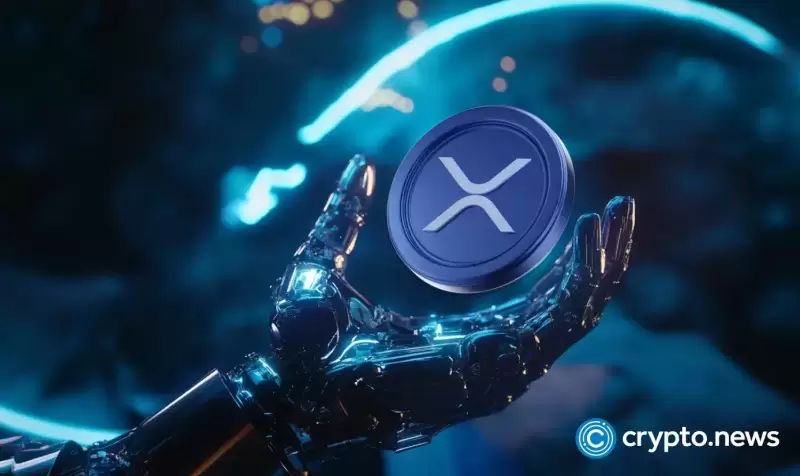 |
|
 |
|
 |
|
 |
|
 |
|
 |
|
 |
|
 |
|
 |
|
 |
|
 |
|
 |
|
 |
|
 |
|
 |
|
由于第2层扩展解决方案仍然是行业话语的焦点,因此Sonic提出了区块链体系结构的根本转变。

Layer 2 scaling solutions have been a major point of discussion in the crypto industry as projects aim to maximize throughput and minimize transaction fees. However, Sonic presents a different model for increasing throughput and throughput while also reducing fees. To understand this model better, HTX Research has released a report titled “Sonic: A Model for the New DeFi Paradigm.” The report provides a comprehensive analysis of the Sonic public chain, renowned for its exceptional speed and low transaction costs.
第2层缩放解决方案一直是加密行业的主要讨论点,因为项目旨在最大化吞吐量并最大程度地减少交易费用。但是,Sonic提出了一个不同的模型,以增加吞吐量和吞吐量,同时还会减少费用。为了更好地了解该模型,HTX Research发布了一份名为“ Sonic:新Defi范式的模型”的报告。该报告提供了对声音公共连锁店的全面分析,该链以其出色的速度和低交易成本而闻名。
Sonic: 2000+ TPS, 0.7s Confirmation, Near-Zero Fees
Sonic:2000+ TP,0.7S确认,接近零费用
Initially launched as Fantom Opera, the aDAG-based Layer 1 was known for its speed and high TPS in comparison to other smart contracts platforms. As the ecosystem expanded, Fantom encountered scalability limitations with its traditional EVM architecture, leading to issues like bloated state storage, slow node synchronization, and execution bottlenecks. To overcome these challenges without resorting to sharding or Layer 2 solutions, Fantom embarked on a complete redesign of its virtual machine, storage, and consensus to create Sonic.
与其他智能合约平台相比,基于ADAG的第1层最初是作为Fantom Opera推出的,以其速度和高TPS而闻名。随着生态系统的扩展,Fantom通过其传统的EVM架构遇到了可伸缩性的限制,这导致了诸如状态存储,慢节点同步和执行瓶颈等问题。为了克服这些挑战而无需诉诸碎片或第2层解决方案,Fantom启动了其虚拟机,存储和共识的完整重新设计以创建Sonic。
A new team, Sonic Labs, led by CEO Michael Kong, CTO Andre Cronje (founder of Yearn Finance), and Chief Research Officer Bernhard Scholz, spent two and a half years developing Sonic, an independent EVM-compatible chain capable of handling over 2,000 TPS, achieving 0.7-second finality, and executing transactions at a cost of $0.0001. It also integrates efficiently, reducing storage footprint by 90% and node synchronization time from several weeks to less than two days.
由首席执行官Michael Kong,CTO Andre Cronje(Yearn Finance的创始人)和首席研究官Bernhard Scholz领导的一支新团队Sonic Labs,花了两年半的时间开发Sonic,这是一家独立的EVM兼容链,能够处理2,000多英尺超过2,000 TPS,可实现0.7秒的最终经济运行,并以$ 0.0001的成本达到了$ 0.0001。它还有效地集成了,将存储足迹降低了90%,节点同步时间从几周到不到两天。
Three technical innovations drive Sonic’s performance: the aDAG architecture, a modified Byzantine Fault Tolerant (BFT) engine, and a state compression algorithm. Together, they enable Sonic to achieve both high throughput and low latency, crucial for a smooth user experience.
三项技术创新推动了Sonic的性能:ADAG体系结构,经过修改的拜占庭容错(BFT)发动机和一种状态压缩算法。它们共同使Sonic能够达到高吞吐量和低潜伏期,对于流畅的用户体验至关重要。
Stablecoin Ecosystem: Nested Yield and Resilient Growth
Stablecoin生态系统:嵌套产量和弹性生长
In a stark contrast to the prevailing market trends in 2025, Sonic’s on-chain TVL has surged by over 500%, and the total stablecoin supply now exceeds $260 million. This growth is attributed to the sophisticated high-leverage yield mechanisms that have been integrated into the Sonic ecosystem.
与2025年普遍的市场趋势形成鲜明对比的是,Sonic的链链TVL飙升了500%以上,而Stablecoin的总供应总额超过2.6亿美元。这种增长归因于已集成到声音生态系统中的复杂的高杠杆产量机制。
As the ecosystem expands further, it will incorporate Real World Asset (RWA) yields and efficient off-chain payment solutions to create a truly sustainable and widely used stablecoin ecosystem backed by compliant assets and real-world applications.
随着生态系统的进一步扩展,它将结合现实世界资产(RWA)的收益率和有效的脱链支付解决方案,以创建一个真正可持续的稳定生态系统,并由合规资产和现实世界应用支持。
Conclusion: Sonic – Leading the Charge in 2.0
结论:声音 - 领导2.0的指控
Sonic’s high performance, nested yields, and accessibility factor are setting the stage for rapid growth, with the potential to exceed $2B TVL and a multi-billion $S token market cap within a year. More importantly, Sonic is championing an “efficiency revolution” in blockchain design—prioritizing performance and capital efficiency to attract liquidity. The report also identifies technical challenges, including the adaptive AMM’s reliance on external oracles, which introduces potential vulnerabilities.
Sonic的高性能,嵌套收益率和可访问性因素为快速增长奠定了基础,一年内有可能超过$ 2B的TVL和数十亿美元的代币市值。更重要的是,Sonic是在区块链设计中倡导“效率革命”,这可以提高绩效和资本效率以吸引流动性。该报告还确定了技术挑战,包括自适应AMM对外部甲壳的依赖,这引入了潜在的脆弱性。
From a broader perspective, Sonic is well-positioned to spearhead the anticipated 2025 resurgence of DeFi. Its thriving stablecoin ecosystem serves to boost the value of both the $S token and the network. Even in the face of a bear market, Sonic showcases the potential of DeFi to establish persistent "yield havens" through innovation and performance. Ultimately, with its nested yields, developer-focused incentives, and efficient infrastructure, Sonic provides a model for the industry. The integration of RWA yields and payment use cases could place Sonic as a critical bridge between on-chain yields and real-world utility, driving DeFi toward mass adoption.
从更广泛的角度来看,Sonic的位置良好,可以带头预期的2025年Defi复兴。它蓬勃发展的Stablecoin生态系统可提高$ S令牌和网络的价值。即使面对熊市,Sonic也展示了Defi通过创新和绩效建立持续的“产量避风港”的潜力。最终,Sonic凭借其嵌套收益率,以开发人员为中心的激励措施和有效的基础设施为行业提供了模型。 RWA收益率和付款用例的整合可能会使Sonic成为链上收益率和现实世界实用程序之间的关键桥梁,从而将Defi推向大众采用。
免责声明:info@kdj.com
所提供的信息并非交易建议。根据本文提供的信息进行的任何投资,kdj.com不承担任何责任。加密货币具有高波动性,强烈建议您深入研究后,谨慎投资!
如您认为本网站上使用的内容侵犯了您的版权,请立即联系我们(info@kdj.com),我们将及时删除。























































